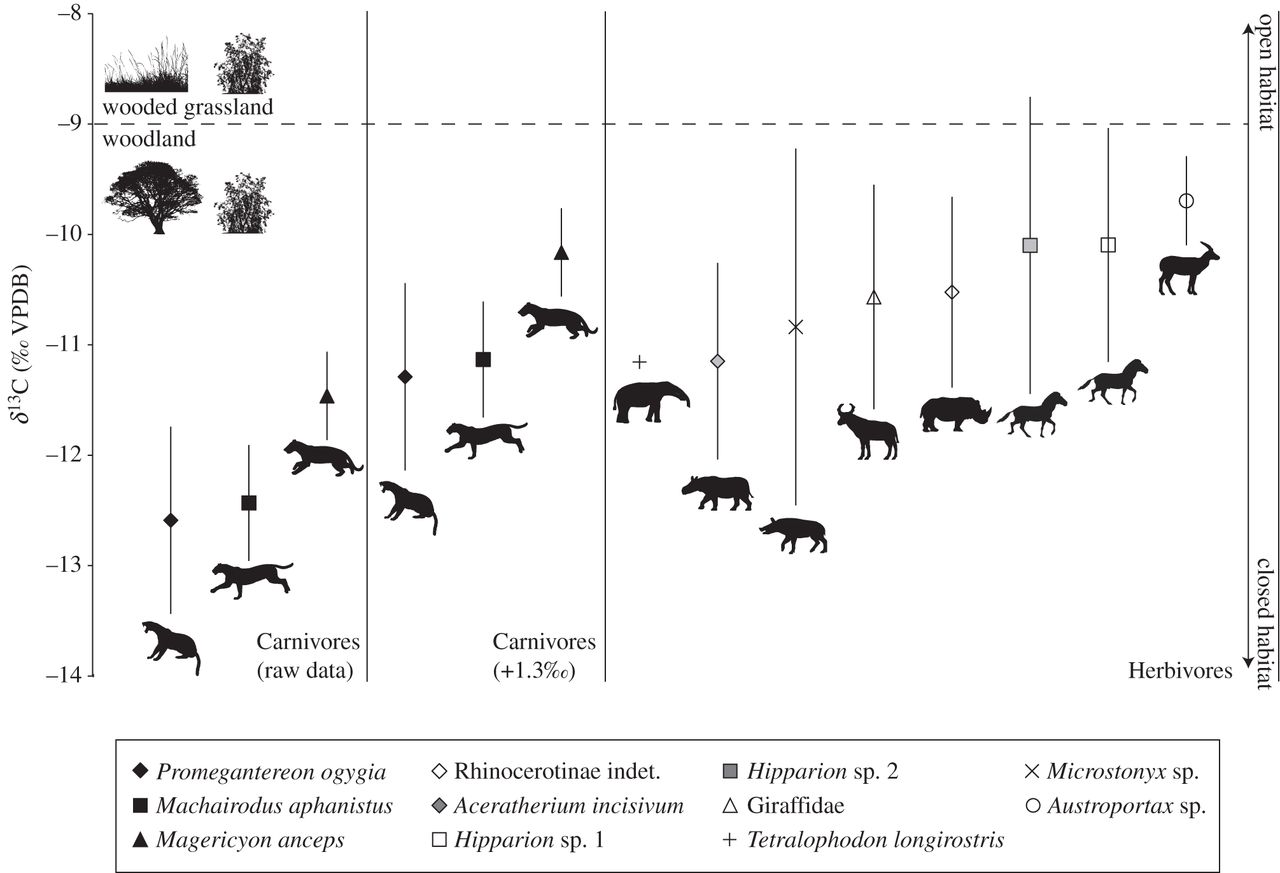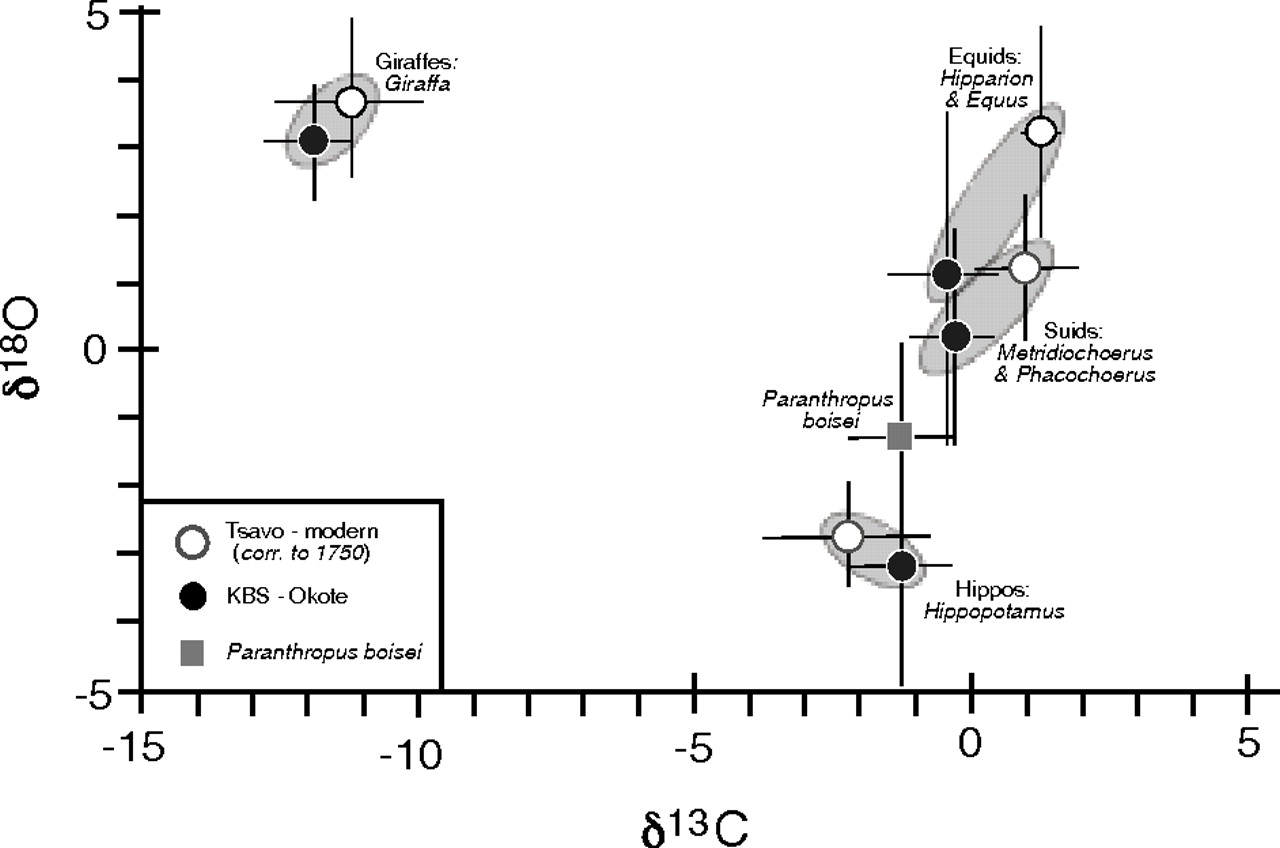So You Wanna Be a Paleoecologist? Part II
Paleoecology, Paleodiets, and Paleobiology
In my last entry, I explained the basics of stable isotope geochemistry for paleoecology. Now that we have covered what isotopes are and how they work, you may be wondering: what can we use them for in vertebrate paleontology? Luckily, there are loads of interesting questions that can and have been answered using stable isotope geochemistry and vertebrate fossils. I’m going to talk about a few recent papers that exemplify how great stable isotopes are for paleoecologists who are interested in vertebrates, but remember there is an enormous body of work out there for you to check out!
Ancient Food Webs
In modern ecosystems, we frequently examine food webs and dietary habits of apex predators to learn more about how animal communities interact. We also need to know this information for conservation purposes. But how have food webs and dietary niches changed over millions of years? Stable isotopes help us tease apart this complex question. In Domingo et al. (2013), an abundant fossil mammal assemblage from the Late Miocene of Spain was examined to better understand the resource partioning and habitat of extinct carnivorous mammals.

The δ13C values of the herbivores indicated this environment was mostly a pure C3 environment, dominated by wooded areas. There were statistically significant dietary differences between two of the sabre-toothed cats when compared with the amphicyonid, indicating dietary niche partioning between top predators. Examining a rich diversity of fossils in one ecosystem has allowed for a food web to be established in this region for the Late Miocene, which would not be possible without stable isotope geochemistry.
Paleodiets and Paleobiology
Stable isotopes are useful when we have enigmatic fossil taxa that have ambiguous morphologies. We often want to know: what did these animals eat? Sometimes, dental morphology cannot tell us everything we want to know about the paleodiets of a mysterious fossil taxon.
Paranthropus boisei is an ancient hominin that lived around 2 million years ago in East Africa. It possessed dental characteristics, such as low-cusped molars, which lead to the popular opinion that P. boisei ate mostly hard nuts and seeds. But, as Cerling et al. (2011) showed, carbon isotopes illustrated P. boisei actually ate mostly C4 grasses and shrubs, more than any other hominin ever studied using this method.

Stables isotopes can also elucidate the paleodiets of dinosaurs. Spinosaurs were a type of theropod dinosaur with very odd dentition that was quite crocodilian. Their conical teeth have often been thought to be a specialization for piscivory, but this is difficult to prove. By utilizing oxygen isotopes, Amiot et al. (2010) used specimens of spinosaurs from all around the world and showed their oxygen isotope composition is closer to co-occuring crocodiles and turtles than terrestrial theropods. This leads them to conclude spinosaurs may indeed have spent a large portion of their life foraging for food in aquatic environments.
These are just a few examples of how stable isotopes can be used in vertebrate paleontology to tell us more about ecology, biology, and diets of long extinct animals. Although there is a large body of work on this subject, there are still many regions of the world that remain relatively unsampled in this manner. If you want to use stable isotopes at your own field site or on a specimen you have, contact a stable isotope geochemist near you, they are always willing to help!
References
Amiot R., et al. 2010. Oxygen isotope evidence for semi-aquatic habits among spinosaurid theropods. Geology 38, 139–142.
Cerling,T., et al. 2011. Diet of Paranthropus boisei in the early Pleistocene of East Africa. PNAS 108, (23) 9337-9341.
Domingo, M.S. 2013. Resource partioning among top predators in a Miocene food web. Proc. R. Soc. B. 280, (1750).
